
by Ria Olivier | Jun 8, 2025 | International Days, Oceanography, Uncategorised
One Ocean, One Climate, One Future – Together
 On 8 June 2025, the SANAP community celebrates World Oceans Day under the powerful theme: One Ocean, One Climate, One Future – Together. At the heart of this theme lies a call to protect our blue planet through collective research, and deepened understanding of the critical role our oceans play in shaping the Earth’s climate and supporting life.
On 8 June 2025, the SANAP community celebrates World Oceans Day under the powerful theme: One Ocean, One Climate, One Future – Together. At the heart of this theme lies a call to protect our blue planet through collective research, and deepened understanding of the critical role our oceans play in shaping the Earth’s climate and supporting life.
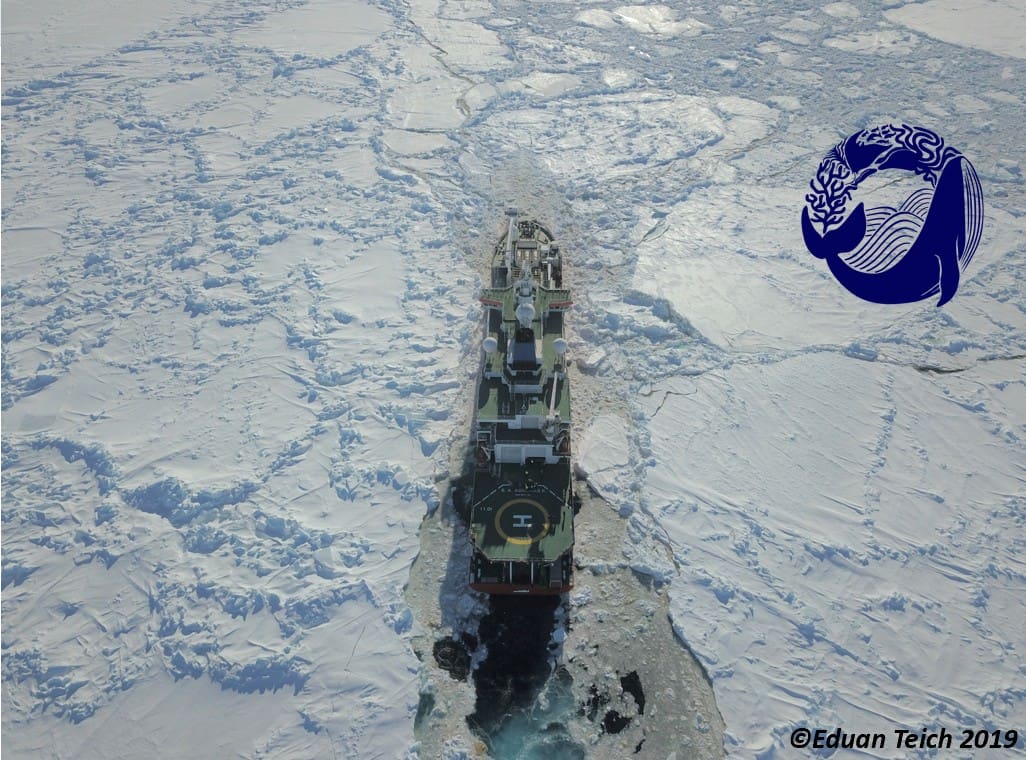 For the South African National Antarctic Programme (SANAP), this is more than a celebration—it’s a reaffirmation of our mission – Understand, Develop and Conserve. Our Southern Ocean research efforts are driven by the urgent need to understand the links between ocean health, climate change, and the wellbeing of future generations. South Africa, as a gateway to Antarctica and the Southern Ocean, plays a key scientific and logistical role in advancing global knowledge of polar and marine systems.
For the South African National Antarctic Programme (SANAP), this is more than a celebration—it’s a reaffirmation of our mission – Understand, Develop and Conserve. Our Southern Ocean research efforts are driven by the urgent need to understand the links between ocean health, climate change, and the wellbeing of future generations. South Africa, as a gateway to Antarctica and the Southern Ocean, plays a key scientific and logistical role in advancing global knowledge of polar and marine systems.
 Sometimes called the lungs of the planet, the Southern Ocean absorbs vast amounts of carbon dioxide and heat, making it one of the most crucial regulators of Earth’s climate. It drives ocean circulation, supports unique ecosystems, and connects all major ocean basins. However, it is also one of the fastest-changing regions due to climate change—warming waters, shifting ice dynamics, and altered ecosystems pose challenges that demand urgent scientific attention.
Sometimes called the lungs of the planet, the Southern Ocean absorbs vast amounts of carbon dioxide and heat, making it one of the most crucial regulators of Earth’s climate. It drives ocean circulation, supports unique ecosystems, and connects all major ocean basins. However, it is also one of the fastest-changing regions due to climate change—warming waters, shifting ice dynamics, and altered ecosystems pose challenges that demand urgent scientific attention.
 SANAP’s Research Footprint
SANAP’s Research Footprint
 Through SANAP, South African researchers from various institutions are contributing world-class science to understand and protect the Southern Ocean:
Through SANAP, South African researchers from various institutions are contributing world-class science to understand and protect the Southern Ocean:
- The University of Cape Town (UCT) leads long-term monitoring programs on carbon fluxes, ocean-atmosphere interactions, and ecosystem responses to warming. MARiS includes the Antarctic MIZ Observations: Interdisciplinary approaches to resolve seasonal sea-ice variability. The SEAmester floating classroom initiative also trains young scientists at sea, combining education with real-time research.
- Stellenbosch University contributes cutting-edge work in marine microbiology and ocean biogeochemistry, studying the role of microscopic life in global carbon cycling and nutrient dynamics.
- Nelson Mandela University focuses on marine top predators, such as seals and penguins, to track ecosystem health and food web shifts in response to
- South African Weather Service project includes the decoding the mercury cycle in the Southern Ocean: in situ observations and advanced modelling
- CSIR – Smart Places – SOCCO has two projects focusing on the Southern Ocean Carbon-Heat Nexus: mixed-layer processes & feedback for improved climate projections and emergent constraints on Southern Ocean phytoplankton physiology (ECOSOPHY)

by Ria Olivier | Jun 5, 2025 | Antarctica, Environment, Gough Island, International Days, Marion Island, SANAP
Today, on World Environment Day, SANAP join the global community in recognizing the vital importance of our planet’s ecosystems — and reaffirm its commitment to understanding and protecting one of the most extreme, yet crucial, environments on Earth: The Southern Ocean and Antarctic regions. SANAP leads scientific research and environmental stewardship across Marion Island, Gough Island, and Antarctica. These frontiers may seem remote, but they play a critical role in regulating Earth’s climate, supporting unique biodiversity, and offering invaluable insight into global environmental change.
 The Southern Ocean: A Climate Regulator: The Southern Ocean surrounding Antarctica is a house of climate regulation, absorbing vast amounts of atmospheric carbon and heat. SANAP researchers are actively researching ocean currents, sea ice dynamics, and carbon cycling to better understand how these processes are evolving in a warming world. (Photo credit: A Zietsman)
The Southern Ocean: A Climate Regulator: The Southern Ocean surrounding Antarctica is a house of climate regulation, absorbing vast amounts of atmospheric carbon and heat. SANAP researchers are actively researching ocean currents, sea ice dynamics, and carbon cycling to better understand how these processes are evolving in a warming world. (Photo credit: A Zietsman)
 Protecting Life on the Edge: From the wandering albatross on Marion Island to microscopic extremophiles in Antarctic soils, life persists against all odds in these regions. SANAP’s biodiversity monitoring projects are uncovering the intricate web of life that depends on these environments — and how threats such as invasive species, plastic pollution, and climate variability are impacting these ecosystems. (Photo Credit left: M Greve, middle & right: CJ Scheepers)
Protecting Life on the Edge: From the wandering albatross on Marion Island to microscopic extremophiles in Antarctic soils, life persists against all odds in these regions. SANAP’s biodiversity monitoring projects are uncovering the intricate web of life that depends on these environments — and how threats such as invasive species, plastic pollution, and climate variability are impacting these ecosystems. (Photo Credit left: M Greve, middle & right: CJ Scheepers)
 Long-Term Science, Global Impact: With decades of data collection and continuous human presence at SANAP’s research stations, SANAP long-term research projects offer insights into environmental change. Through collaborations with international partners, SANAP helps shape global understanding of polar processes and their far-reaching effects. This World Environment Day, SANAP celebrates the resilience of our southernmost ecosystems and the SANAP community is dedicated to its preservation. As stewards of the Antarctic and sub-Antarctic, SANAP remain committed to advancing knowledge, promoting conservation, and ensuring these unique environments endure for future generations. (Photo Credit: Greg Hofmeyr)
Long-Term Science, Global Impact: With decades of data collection and continuous human presence at SANAP’s research stations, SANAP long-term research projects offer insights into environmental change. Through collaborations with international partners, SANAP helps shape global understanding of polar processes and their far-reaching effects. This World Environment Day, SANAP celebrates the resilience of our southernmost ecosystems and the SANAP community is dedicated to its preservation. As stewards of the Antarctic and sub-Antarctic, SANAP remain committed to advancing knowledge, promoting conservation, and ensuring these unique environments endure for future generations. (Photo Credit: Greg Hofmeyr)
World Environment Day
World Environment Day is the biggest international day for the environment. Led by the United Nations Environment Programme (UNEP), and held annually since 1973, it has grown to be the largest global platform for environmental outreach. It is celebrated by millions of people across the world. The Republic of Korea will host World Environment Day 2025 with a focus on ending plastic pollution globally. Ridding the planet of plastic pollution is an important contribution to achieving the Sustainable Development Goals, including those on climate action, sustainable production and consumption, protection of seas and oceans and repairing ecosystems and retaining biodiversity. (Text: https://www.worldenvironmentday)

by Ria Olivier | Jun 1, 2025 | Antarctica, Commemorative Days, Current Event, Ecology, Environment, Gough Island, Marion Island
June is Environment Month under the theme “Think, Eat, Save and reduce your foodprint”
 June marks National Environment Month in South Africa — a time for reflection, awareness, and action toward safeguarding our natural world. Spearheaded by the Department of Forestry, Fisheries and the Environment (DFFE), this month-long observance highlights the importance of environmental stewardship and calls on all citizens to contribute to a more sustainable future. Central to these celebrations are two globally recognised days: World Environment Day on June 5th and World Oceans Day on June 8th, both of which resonate strongly with the mission and work of the South African National Antarctic Programme (SANAP).
June marks National Environment Month in South Africa — a time for reflection, awareness, and action toward safeguarding our natural world. Spearheaded by the Department of Forestry, Fisheries and the Environment (DFFE), this month-long observance highlights the importance of environmental stewardship and calls on all citizens to contribute to a more sustainable future. Central to these celebrations are two globally recognised days: World Environment Day on June 5th and World Oceans Day on June 8th, both of which resonate strongly with the mission and work of the South African National Antarctic Programme (SANAP).
 As South Africa’s gateway to the Southern Ocean and Antarctica, SANAP plays a vital role in environmental research and conservation in some of the planet’s most fragile and remote ecosystems — including Antarctica, Marion Island, and Gough Island. During Environment Month, SANAP takes pride in celebrating the unique natural heritage of these sub-Antarctic and Antarctic regions, where pristine ecosystems offer critical insight into global environmental changes.
As South Africa’s gateway to the Southern Ocean and Antarctica, SANAP plays a vital role in environmental research and conservation in some of the planet’s most fragile and remote ecosystems — including Antarctica, Marion Island, and Gough Island. During Environment Month, SANAP takes pride in celebrating the unique natural heritage of these sub-Antarctic and Antarctic regions, where pristine ecosystems offer critical insight into global environmental changes.

 Marion Island, in particular, stands out as a hub of scientific activity. Home to one of SANAP’s permanent research stations, the island has been central to decades of biological and environmental studies. Its long-term monitoring programmes have produced a wealth of scientific papers and post-graduate research, offering rare and invaluable data on biodiversity, ecosystem dynamics, and the far-reaching impacts of climate change. These efforts are not only advancing global understanding of environmental shifts but also reinforcing South Africa’s commitment to science-based conservation.
Marion Island, in particular, stands out as a hub of scientific activity. Home to one of SANAP’s permanent research stations, the island has been central to decades of biological and environmental studies. Its long-term monitoring programmes have produced a wealth of scientific papers and post-graduate research, offering rare and invaluable data on biodiversity, ecosystem dynamics, and the far-reaching impacts of climate change. These efforts are not only advancing global understanding of environmental shifts but also reinforcing South Africa’s commitment to science-based conservation.
This Environment Month, as we reflect on our role in protecting the planet, we honour the scientists, support and teams of SANAP who dedicate their work to safeguarding the southernmost reaches of our world. Their ongoing research ensures that we remain informed and equipped to make decisions that protect our environment — for generations to come.

by Ria Olivier | May 28, 2025 | Gough Island, Jobs, Overwintering Team, Uncategorised
The South African National Antarctic Programme (SANAP) invites applications for the next Gough Island Overwintering Team, who will be stationed at Gough Base from September 2025 to October 2026.
 Gough Island, a UNESCO World Heritage Site, lies over 2,500 km from South Africa and is known for its rugged beauty, unique wildlife, and critical role in weather and climate observation. The island is uninhabited apart from the small overwintering team stationed at Gough Base, which plays a vital role in supporting South Africa’s meteorological and environmental research.
Gough Island, a UNESCO World Heritage Site, lies over 2,500 km from South Africa and is known for its rugged beauty, unique wildlife, and critical role in weather and climate observation. The island is uninhabited apart from the small overwintering team stationed at Gough Base, which plays a vital role in supporting South Africa’s meteorological and environmental research.
Now Recruiting for the 2025–2026 Team
We are looking for skilled, motivated individuals to fill the following overwintering positions(click on position for detailed information:
CLOSING DATE 16 JUNE 2025
Job Page for more information

by Ria Olivier | May 22, 2025 | Antarctica, Biosecurity, Commemorative Days, Gough Island, International Days, Invasion Biology, Marion Island, Prince Edward Islands
 The United Nations has designated May 22 as the International Day for Biological Diversity (IDB), a day to reflect on the vital role biodiversity plays in sustaining life on Earth. The 2025 theme, “Harmony with Nature and Sustainable Development,” underscores the importance of conserving biodiversity to ensure a sustainable future for both people and the planet. It is a timely reminder that a thriving natural world is the foundation of human well-being and a cornerstone for achieving the Sustainable Development Goals.
The United Nations has designated May 22 as the International Day for Biological Diversity (IDB), a day to reflect on the vital role biodiversity plays in sustaining life on Earth. The 2025 theme, “Harmony with Nature and Sustainable Development,” underscores the importance of conserving biodiversity to ensure a sustainable future for both people and the planet. It is a timely reminder that a thriving natural world is the foundation of human well-being and a cornerstone for achieving the Sustainable Development Goals.
 In South Africa, this day holds special meaning for the South African National Antarctic Programme (SANAP). Operating across three key research stations — Antarctica, Marion Island (part of the Prince Edward Islands), and Gough Island — SANAP plays a crucial role in understanding and preserving the unique biodiversity of the sub-Antarctic and Antarctic regions. These remote and fragile ecosystems are home to countless species, many of which are found nowhere else on Earth.
In South Africa, this day holds special meaning for the South African National Antarctic Programme (SANAP). Operating across three key research stations — Antarctica, Marion Island (part of the Prince Edward Islands), and Gough Island — SANAP plays a crucial role in understanding and preserving the unique biodiversity of the sub-Antarctic and Antarctic regions. These remote and fragile ecosystems are home to countless species, many of which are found nowhere else on Earth.
 For decades, SANAP-supported scientists have been at the forefront of biodiversity research in these regions. Their work includes long-term monitoring of bird and marine mammal populations, studies on invasive species, climate change impacts, and ecosystem dynamics. Through rigorous field research and environmental stewardship, SANAP contributes to global knowledge and conservation efforts, ensuring these pristine environments continue to thrive for generations to come.
For decades, SANAP-supported scientists have been at the forefront of biodiversity research in these regions. Their work includes long-term monitoring of bird and marine mammal populations, studies on invasive species, climate change impacts, and ecosystem dynamics. Through rigorous field research and environmental stewardship, SANAP contributes to global knowledge and conservation efforts, ensuring these pristine environments continue to thrive for generations to come.
 On this International Day for Biological Diversity, SANAP reaffirms its commitment to protecting the biodiversity of the Southern Ocean and its islands — not only for their intrinsic value but also for the essential role they play in the global ecosystem.
On this International Day for Biological Diversity, SANAP reaffirms its commitment to protecting the biodiversity of the Southern Ocean and its islands — not only for their intrinsic value but also for the essential role they play in the global ecosystem.
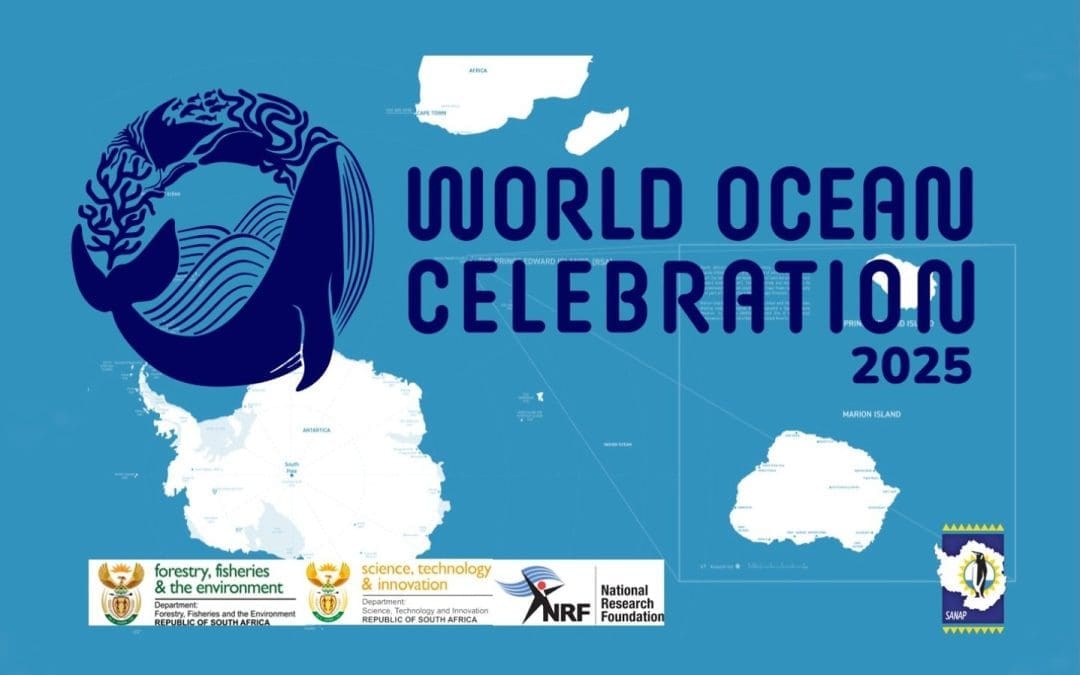
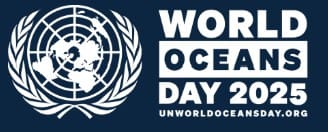 On 8 June 2025, the SANAP community celebrates World Oceans Day under the powerful theme: One Ocean, One Climate, One Future – Together. At the heart of this theme lies a call to protect our blue planet through collective research, and deepened understanding of the critical role our oceans play in shaping the Earth’s climate and supporting life.
On 8 June 2025, the SANAP community celebrates World Oceans Day under the powerful theme: One Ocean, One Climate, One Future – Together. At the heart of this theme lies a call to protect our blue planet through collective research, and deepened understanding of the critical role our oceans play in shaping the Earth’s climate and supporting life. For the South African National Antarctic Programme (SANAP), this is more than a celebration—it’s a reaffirmation of our mission – Understand, Develop and Conserve. Our Southern Ocean research efforts are driven by the urgent need to understand the links between ocean health, climate change, and the wellbeing of future generations. South Africa, as a gateway to Antarctica and the Southern Ocean, plays a key scientific and logistical role in advancing global knowledge of polar and marine systems.
For the South African National Antarctic Programme (SANAP), this is more than a celebration—it’s a reaffirmation of our mission – Understand, Develop and Conserve. Our Southern Ocean research efforts are driven by the urgent need to understand the links between ocean health, climate change, and the wellbeing of future generations. South Africa, as a gateway to Antarctica and the Southern Ocean, plays a key scientific and logistical role in advancing global knowledge of polar and marine systems.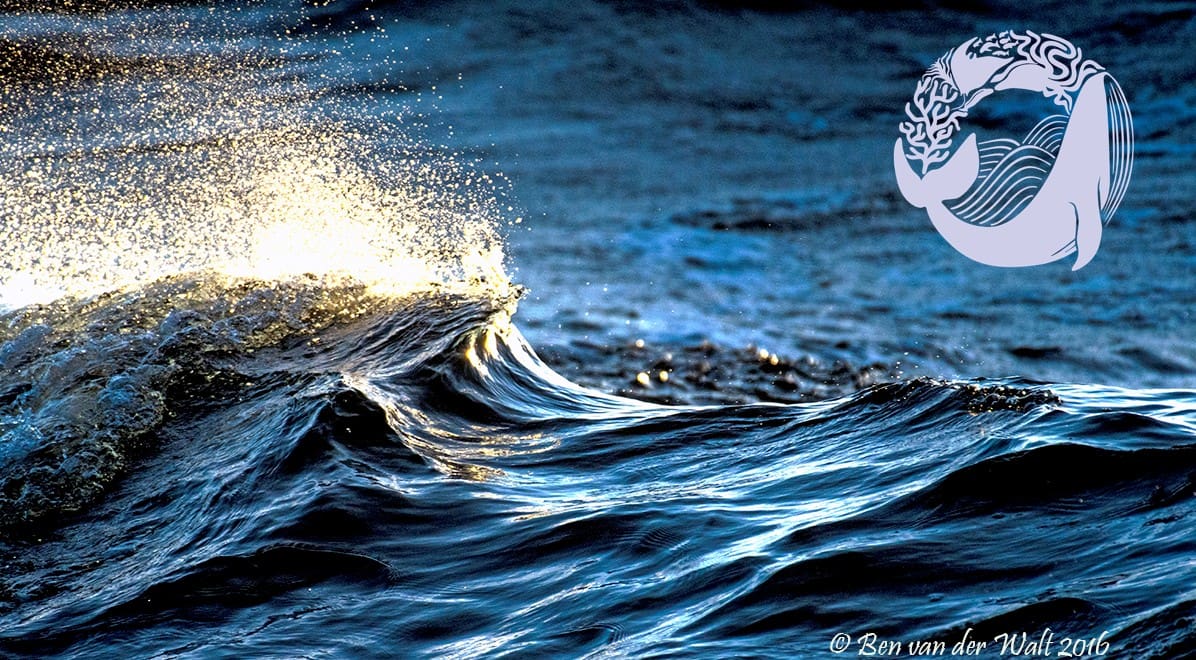 Sometimes called the lungs of the planet, the Southern Ocean absorbs vast amounts of carbon dioxide and heat, making it one of the most crucial regulators of Earth’s climate. It drives ocean circulation, supports unique ecosystems, and connects all major ocean basins. However, it is also one of the fastest-changing regions due to climate change—warming waters, shifting ice dynamics, and altered ecosystems pose challenges that demand urgent scientific attention.
Sometimes called the lungs of the planet, the Southern Ocean absorbs vast amounts of carbon dioxide and heat, making it one of the most crucial regulators of Earth’s climate. It drives ocean circulation, supports unique ecosystems, and connects all major ocean basins. However, it is also one of the fastest-changing regions due to climate change—warming waters, shifting ice dynamics, and altered ecosystems pose challenges that demand urgent scientific attention.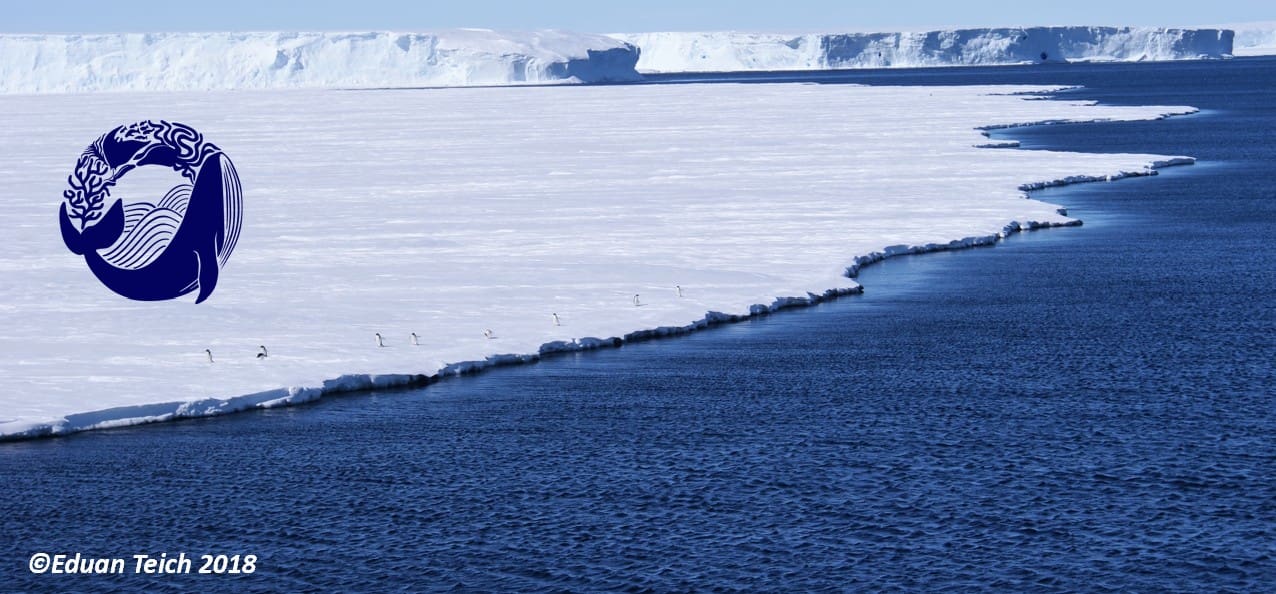 SANAP’s Research Footprint
SANAP’s Research Footprint Through SANAP, South African researchers from various institutions are contributing world-class science to understand and protect the Southern Ocean:
Through SANAP, South African researchers from various institutions are contributing world-class science to understand and protect the Southern Ocean:
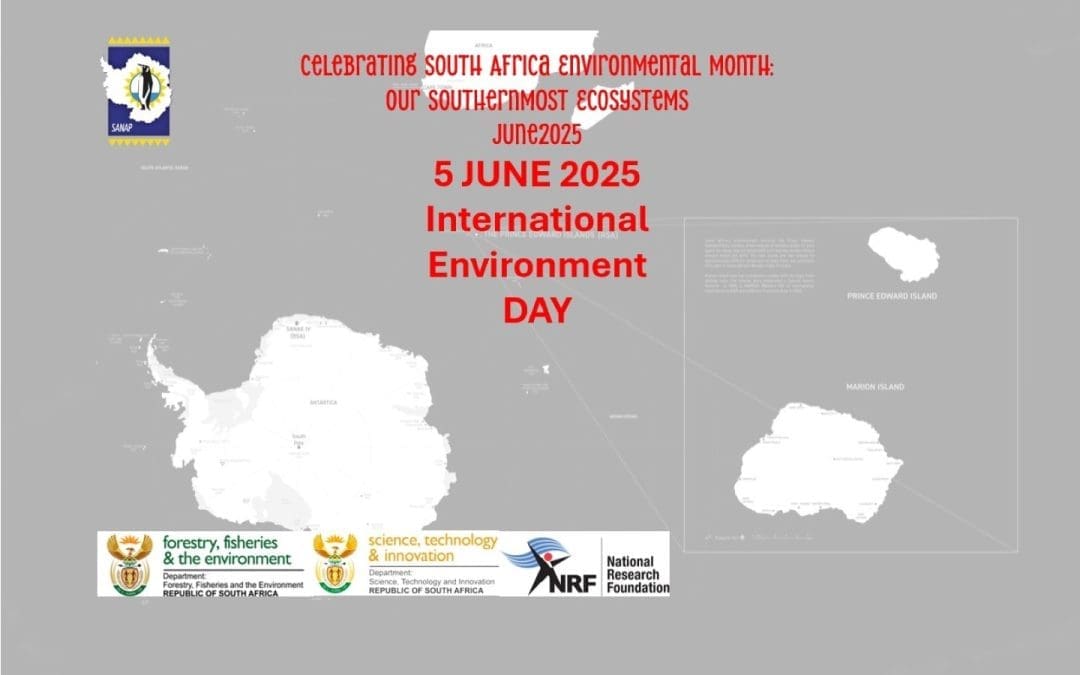
 The Southern Ocean: A Climate Regulator: The Southern Ocean surrounding Antarctica is a house of climate regulation, absorbing vast amounts of atmospheric carbon and heat. SANAP researchers are actively researching ocean currents, sea ice dynamics, and carbon cycling to better understand how these processes are evolving in a warming world. (Photo credit: A Zietsman)
The Southern Ocean: A Climate Regulator: The Southern Ocean surrounding Antarctica is a house of climate regulation, absorbing vast amounts of atmospheric carbon and heat. SANAP researchers are actively researching ocean currents, sea ice dynamics, and carbon cycling to better understand how these processes are evolving in a warming world. (Photo credit: A Zietsman)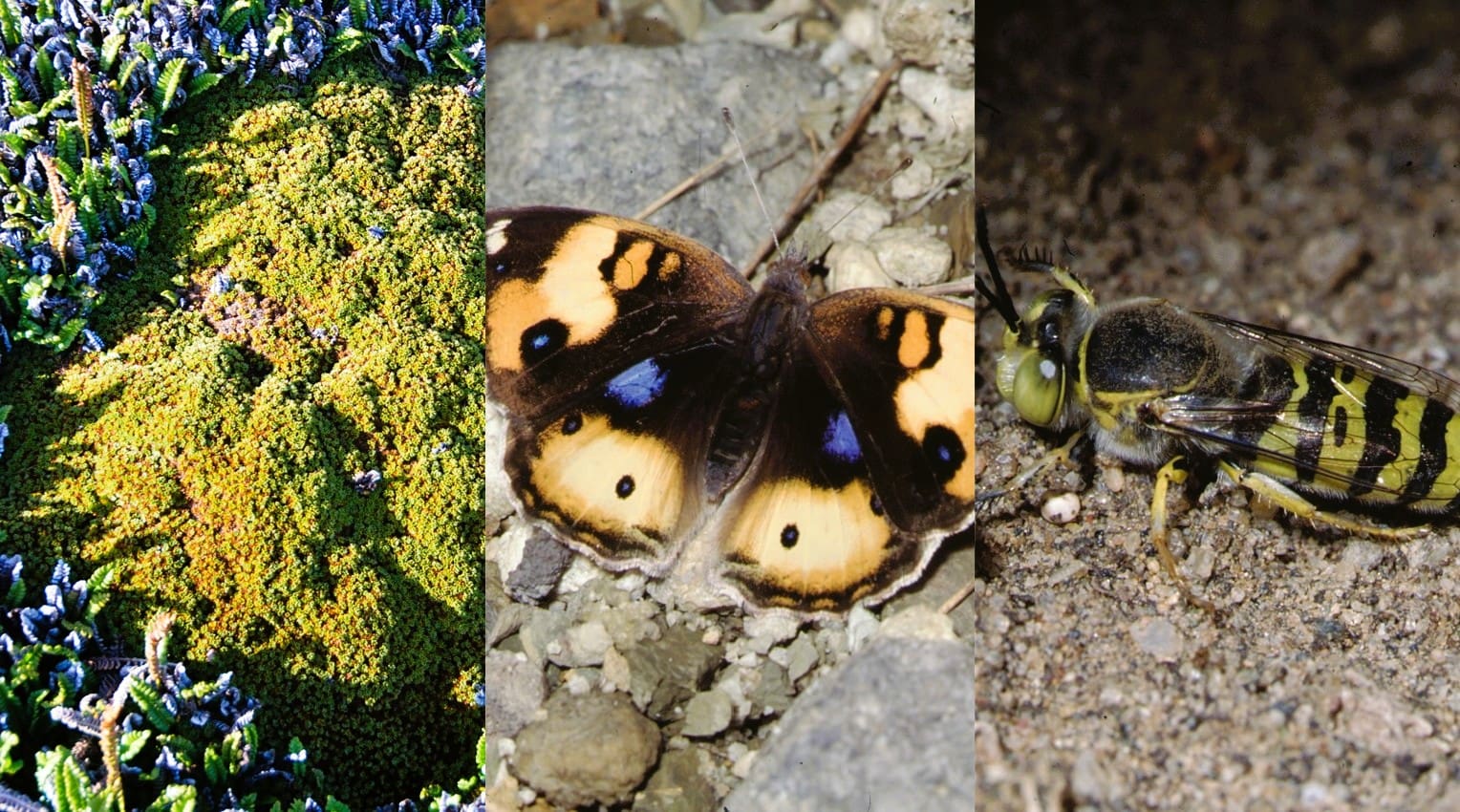 Protecting Life on the Edge: From the wandering albatross on Marion Island to microscopic extremophiles in Antarctic soils, life persists against all odds in these regions. SANAP’s biodiversity monitoring projects are uncovering the intricate web of life that depends on these environments — and how threats such as invasive species, plastic pollution, and climate variability are impacting these ecosystems. (Photo Credit left: M Greve, middle & right: CJ Scheepers)
Protecting Life on the Edge: From the wandering albatross on Marion Island to microscopic extremophiles in Antarctic soils, life persists against all odds in these regions. SANAP’s biodiversity monitoring projects are uncovering the intricate web of life that depends on these environments — and how threats such as invasive species, plastic pollution, and climate variability are impacting these ecosystems. (Photo Credit left: M Greve, middle & right: CJ Scheepers)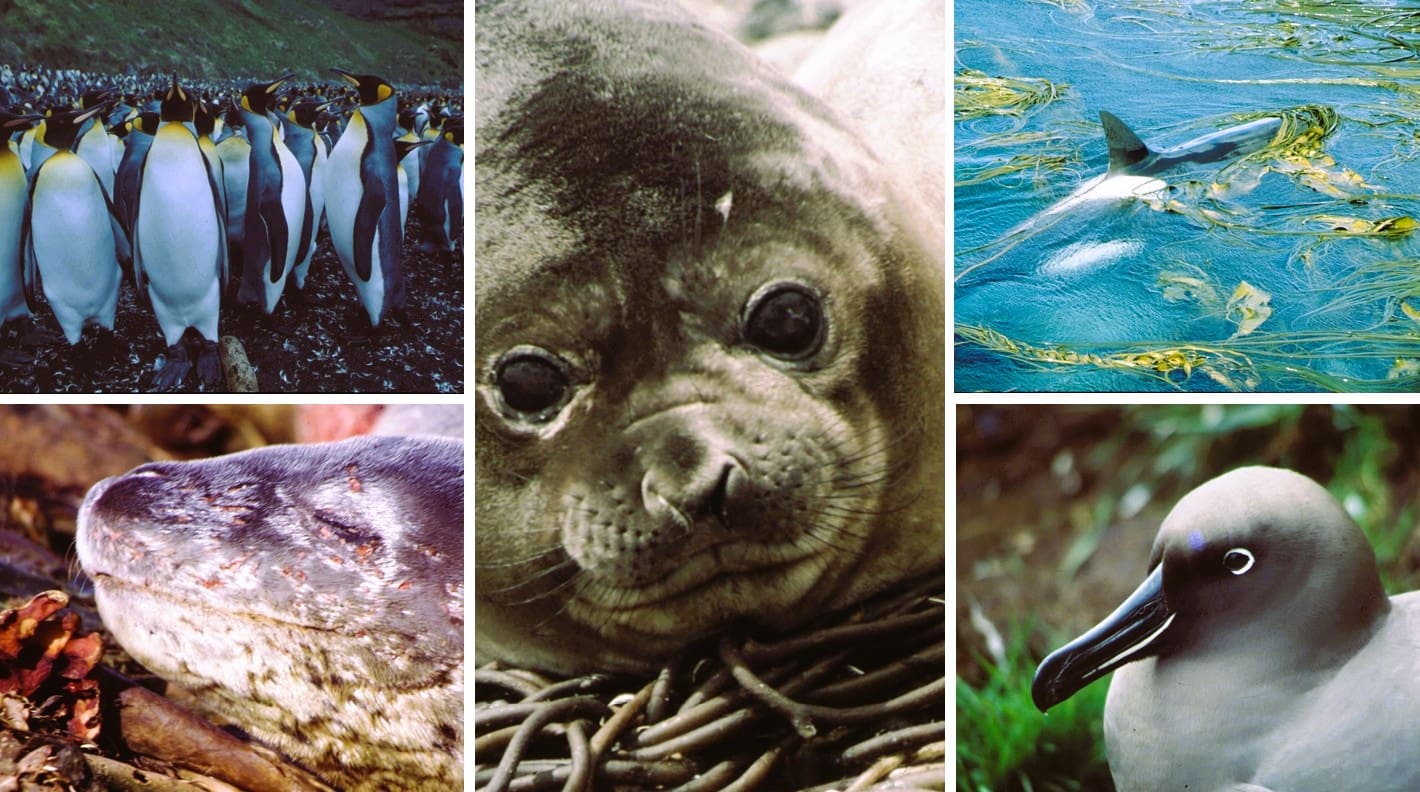 Long-Term Science, Global Impact: With decades of data collection and continuous human presence at SANAP’s research stations, SANAP long-term research projects offer insights into environmental change. Through collaborations with international partners, SANAP helps shape global understanding of polar processes and their far-reaching effects. This World Environment Day, SANAP celebrates the resilience of our southernmost ecosystems and the SANAP community is dedicated to its preservation. As stewards of the Antarctic and sub-Antarctic, SANAP remain committed to advancing knowledge, promoting conservation, and ensuring these unique environments endure for future generations. (Photo Credit: Greg Hofmeyr)
Long-Term Science, Global Impact: With decades of data collection and continuous human presence at SANAP’s research stations, SANAP long-term research projects offer insights into environmental change. Through collaborations with international partners, SANAP helps shape global understanding of polar processes and their far-reaching effects. This World Environment Day, SANAP celebrates the resilience of our southernmost ecosystems and the SANAP community is dedicated to its preservation. As stewards of the Antarctic and sub-Antarctic, SANAP remain committed to advancing knowledge, promoting conservation, and ensuring these unique environments endure for future generations. (Photo Credit: Greg Hofmeyr)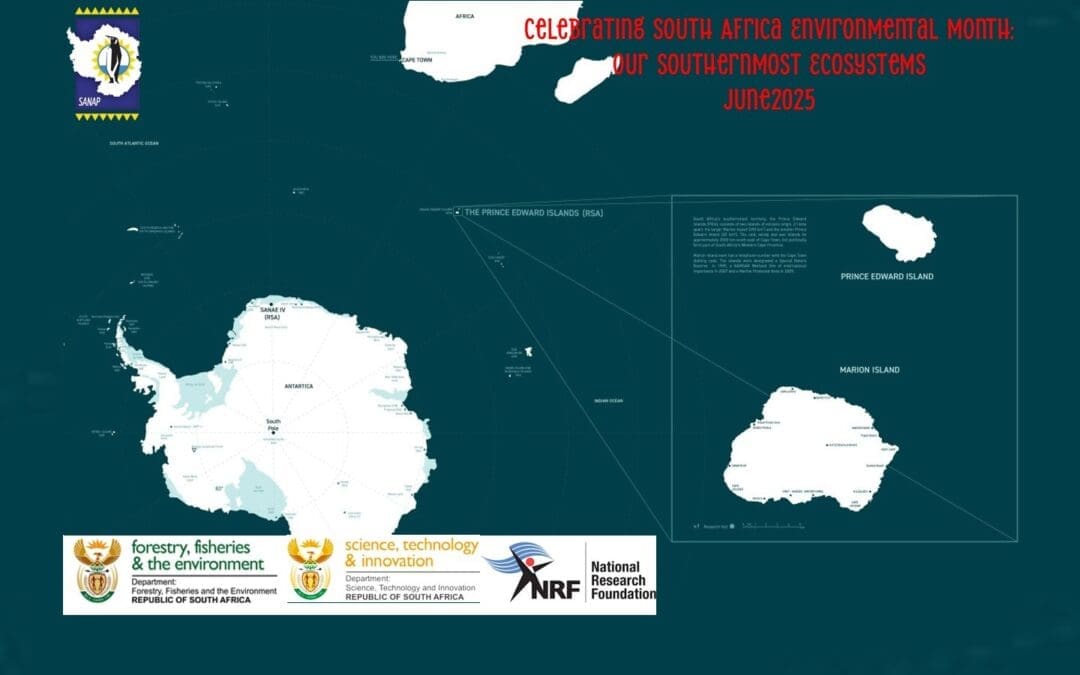
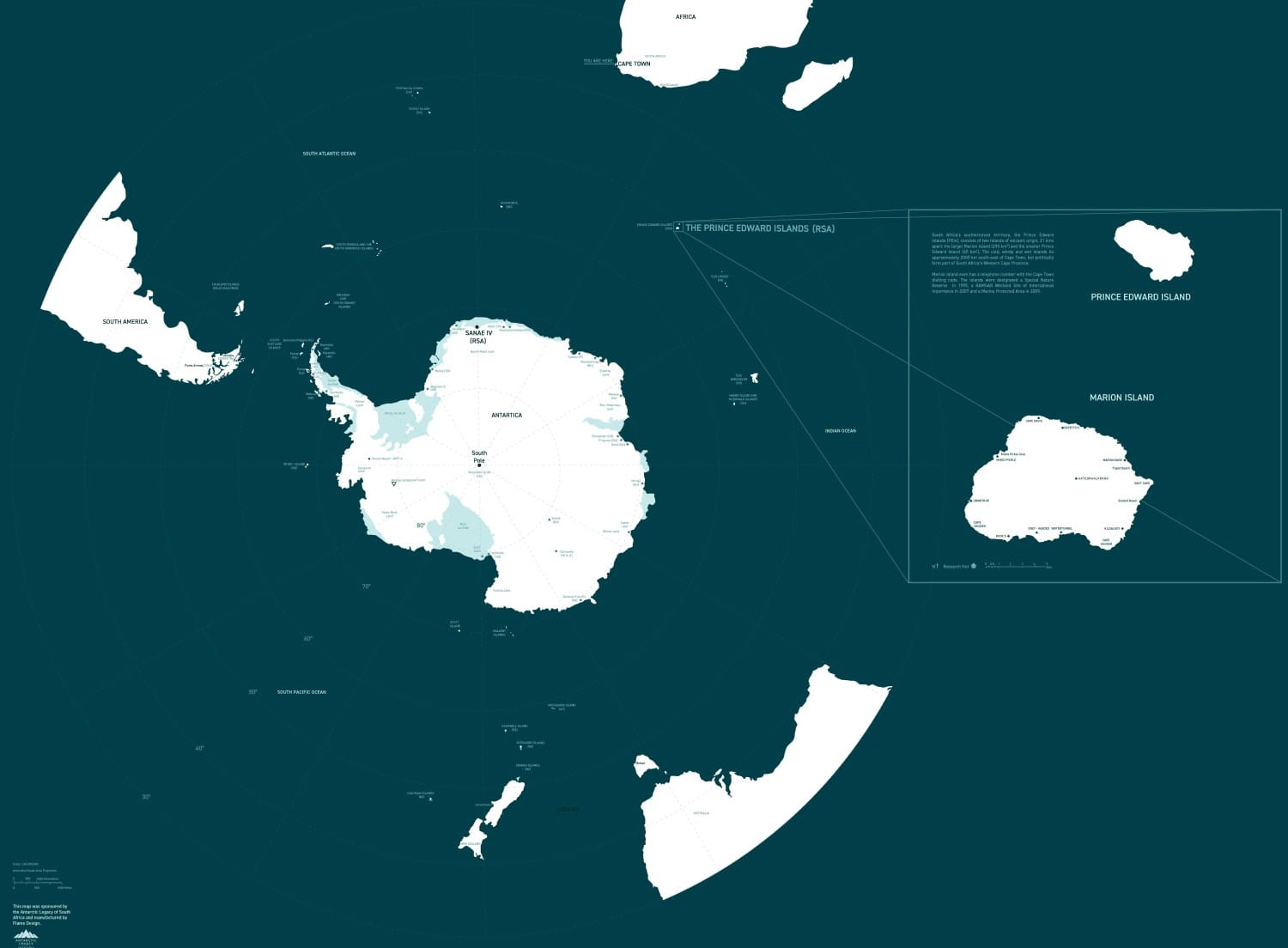 June marks
June marks 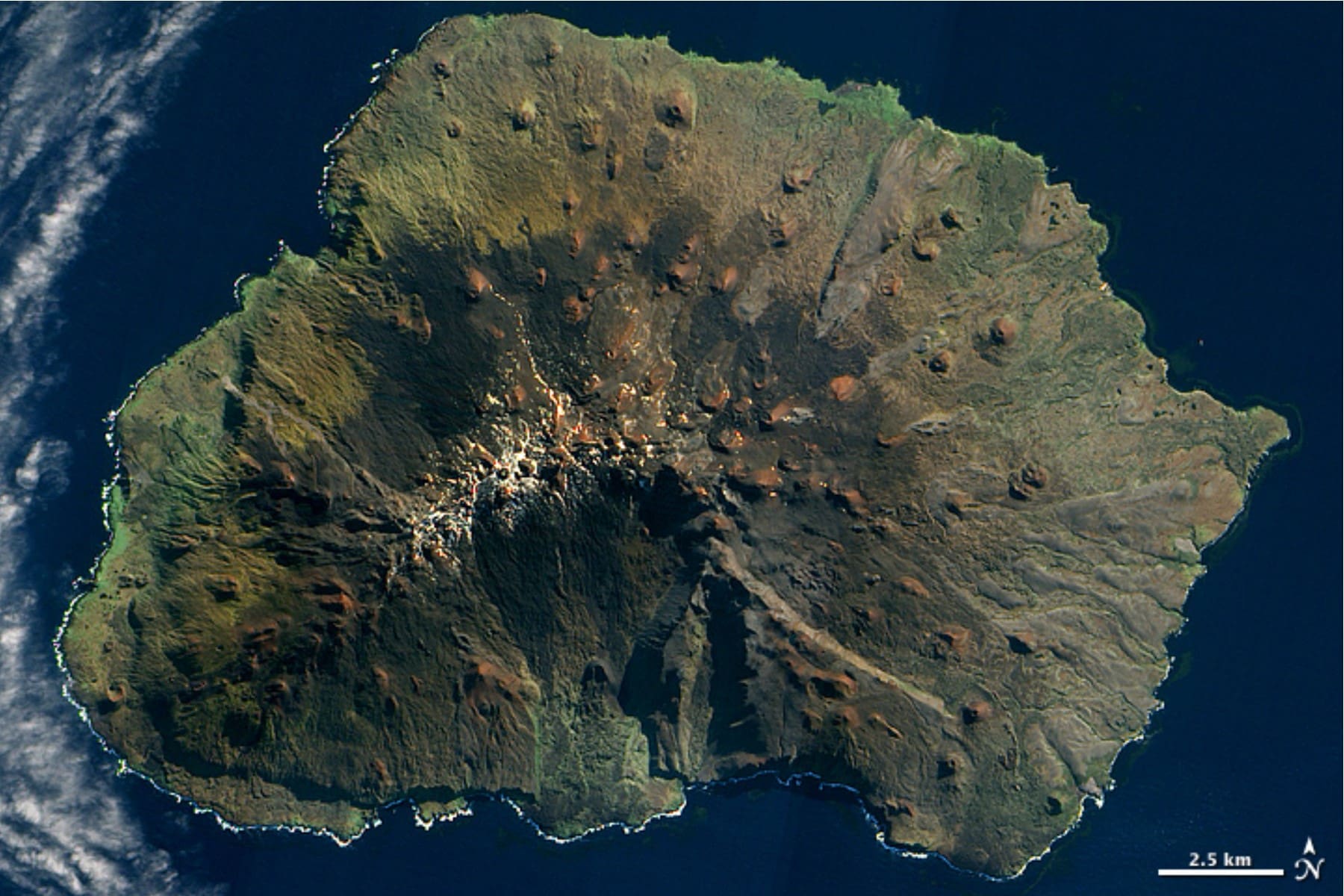
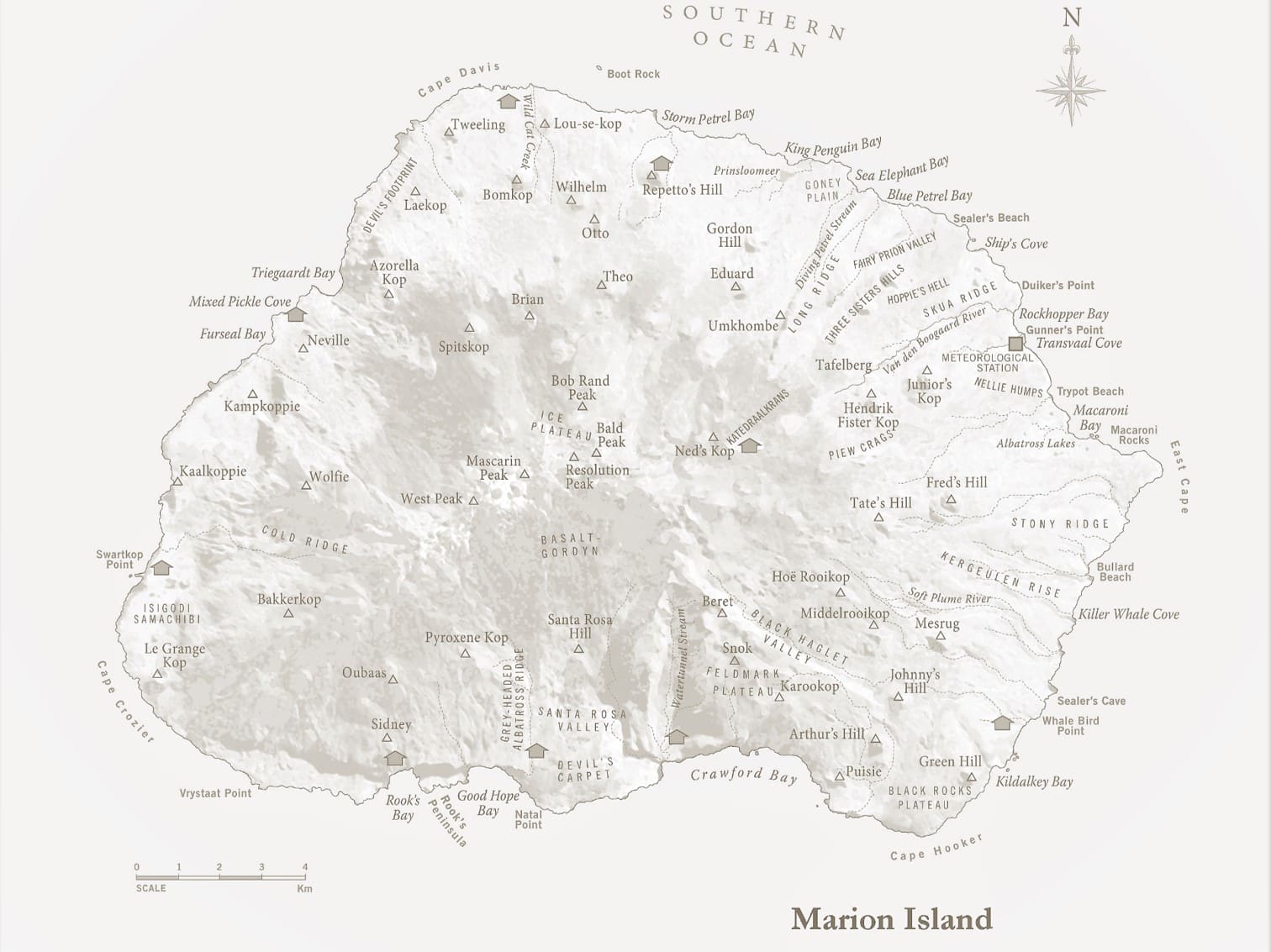 Marion Island, in particular, stands out as a hub of scientific activity. Home to one of SANAP’s permanent research stations, the island has been central to decades of biological and environmental studies. Its long-term monitoring programmes have produced a wealth of scientific papers and post-graduate research, offering rare and invaluable data on biodiversity, ecosystem dynamics, and the far-reaching impacts of climate change. These efforts are not only advancing global understanding of environmental shifts but also reinforcing South Africa’s commitment to science-based conservation.
Marion Island, in particular, stands out as a hub of scientific activity. Home to one of SANAP’s permanent research stations, the island has been central to decades of biological and environmental studies. Its long-term monitoring programmes have produced a wealth of scientific papers and post-graduate research, offering rare and invaluable data on biodiversity, ecosystem dynamics, and the far-reaching impacts of climate change. These efforts are not only advancing global understanding of environmental shifts but also reinforcing South Africa’s commitment to science-based conservation.
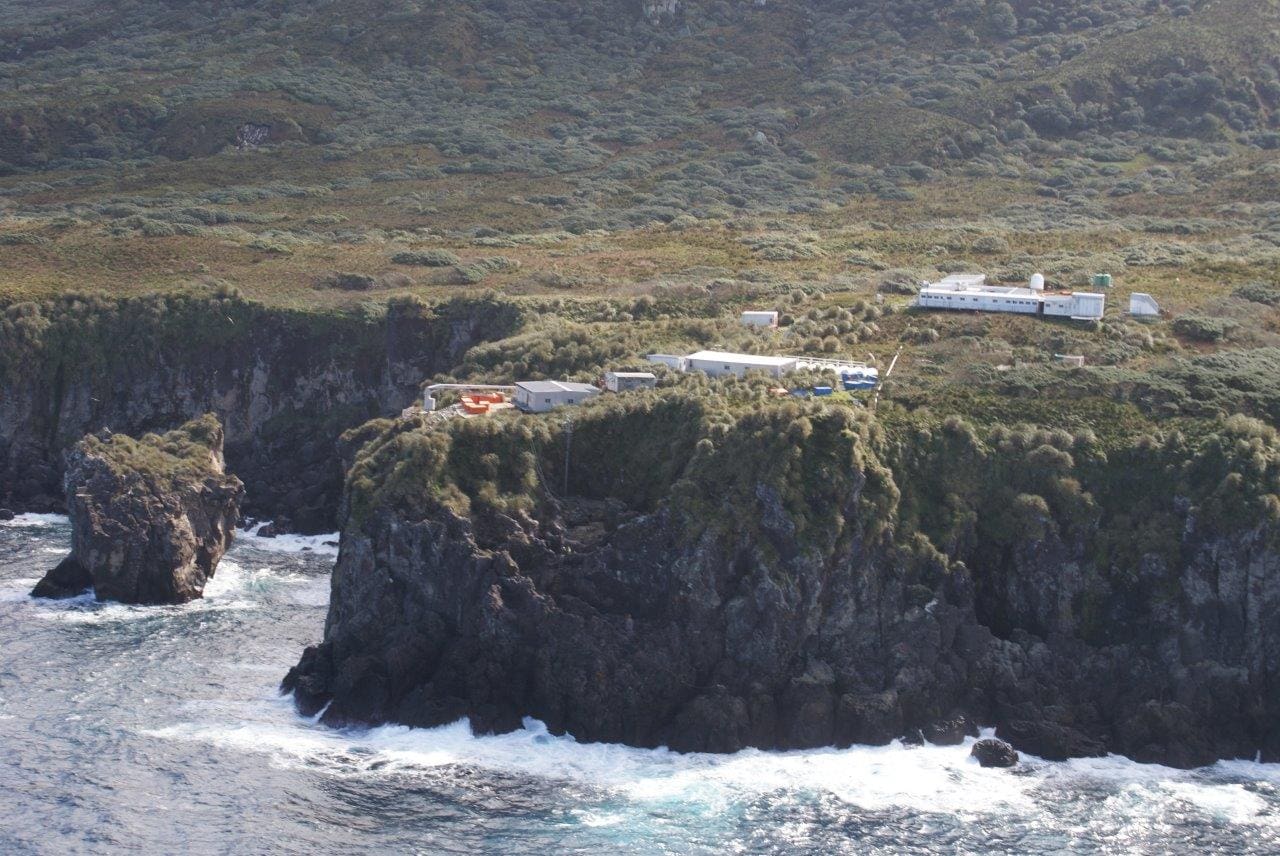 Gough Island, a UNESCO World Heritage Site, lies over 2,500 km from South Africa and is known for its rugged beauty, unique wildlife, and critical role in weather and climate observation. The island is uninhabited apart from the small overwintering team stationed at Gough Base, which plays a vital role in supporting South Africa’s meteorological and environmental research.
Gough Island, a UNESCO World Heritage Site, lies over 2,500 km from South Africa and is known for its rugged beauty, unique wildlife, and critical role in weather and climate observation. The island is uninhabited apart from the small overwintering team stationed at Gough Base, which plays a vital role in supporting South Africa’s meteorological and environmental research.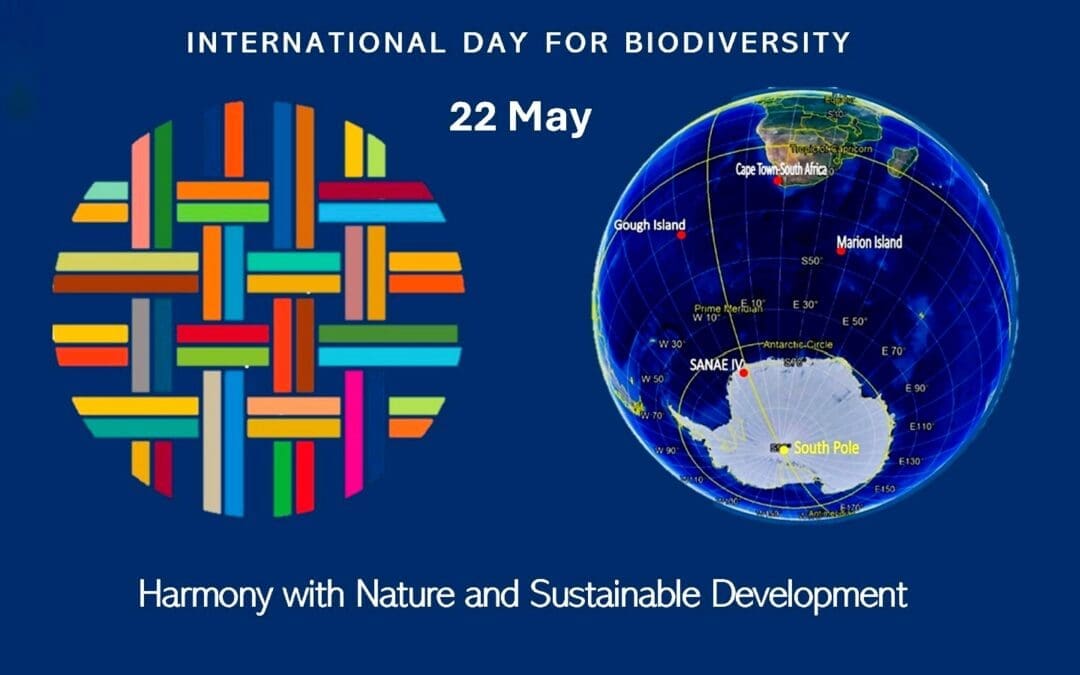
 The United Nations has designated May 22 as the International Day for Biological Diversity (IDB), a day to reflect on the vital role biodiversity plays in sustaining life on Earth. The 2025 theme, “Harmony with Nature and Sustainable Development,” underscores the importance of conserving biodiversity to ensure a sustainable future for both people and the planet. It is a timely reminder that a thriving natural world is the foundation of human well-being and a cornerstone for achieving the Sustainable Development Goals.
The United Nations has designated May 22 as the International Day for Biological Diversity (IDB), a day to reflect on the vital role biodiversity plays in sustaining life on Earth. The 2025 theme, “Harmony with Nature and Sustainable Development,” underscores the importance of conserving biodiversity to ensure a sustainable future for both people and the planet. It is a timely reminder that a thriving natural world is the foundation of human well-being and a cornerstone for achieving the Sustainable Development Goals. In South Africa, this day holds special meaning for the South African National Antarctic Programme (SANAP). Operating across three key research stations — Antarctica, Marion Island (part of the Prince Edward Islands), and Gough Island — SANAP plays a crucial role in understanding and preserving the unique biodiversity of the sub-Antarctic and Antarctic regions. These remote and fragile ecosystems are home to countless species, many of which are found nowhere else on Earth.
In South Africa, this day holds special meaning for the South African National Antarctic Programme (SANAP). Operating across three key research stations — Antarctica, Marion Island (part of the Prince Edward Islands), and Gough Island — SANAP plays a crucial role in understanding and preserving the unique biodiversity of the sub-Antarctic and Antarctic regions. These remote and fragile ecosystems are home to countless species, many of which are found nowhere else on Earth. For decades, SANAP-supported scientists have been at the forefront of biodiversity research in these regions. Their work includes long-term monitoring of bird and marine mammal populations, studies on invasive species, climate change impacts, and ecosystem dynamics. Through rigorous field research and environmental stewardship, SANAP contributes to global knowledge and conservation efforts, ensuring these pristine environments continue to thrive for generations to come.
For decades, SANAP-supported scientists have been at the forefront of biodiversity research in these regions. Their work includes long-term monitoring of bird and marine mammal populations, studies on invasive species, climate change impacts, and ecosystem dynamics. Through rigorous field research and environmental stewardship, SANAP contributes to global knowledge and conservation efforts, ensuring these pristine environments continue to thrive for generations to come. On this International Day for Biological Diversity, SANAP reaffirms its commitment to protecting the biodiversity of the Southern Ocean and its islands — not only for their intrinsic value but also for the essential role they play in the global ecosystem.
On this International Day for Biological Diversity, SANAP reaffirms its commitment to protecting the biodiversity of the Southern Ocean and its islands — not only for their intrinsic value but also for the essential role they play in the global ecosystem.



